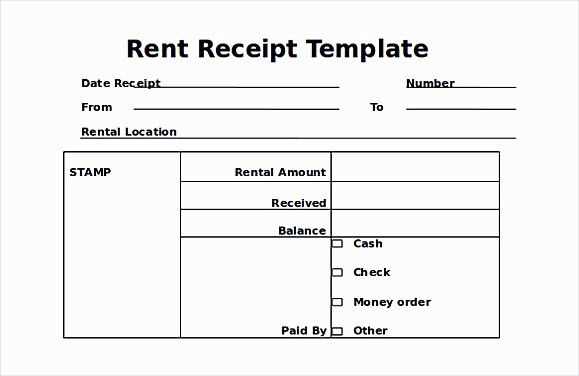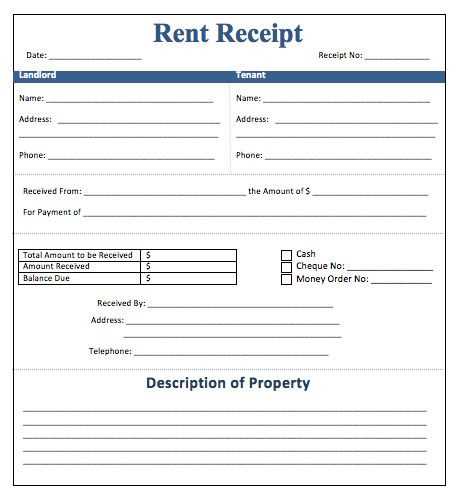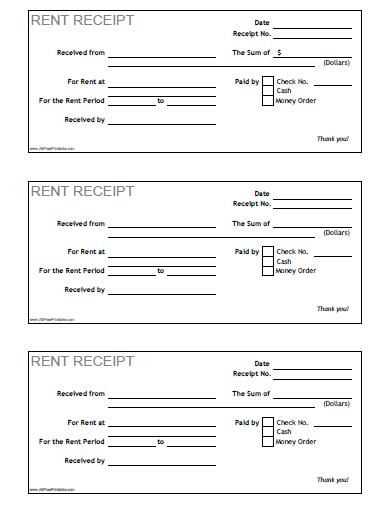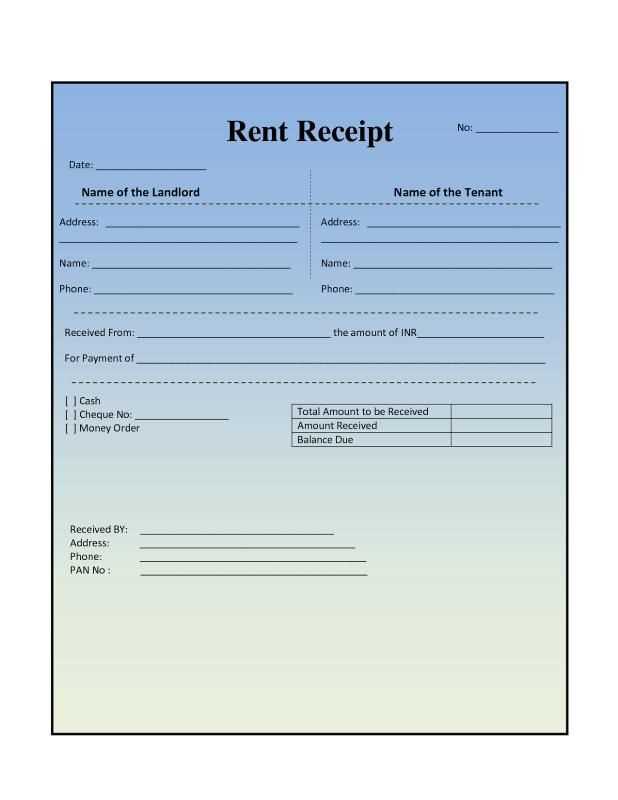
Key Components of a Rental Receipt

A rental receipt should include specific details to ensure clarity and legality. Include the following elements:
- Renter’s Name and Contact Information: Full name and contact details of the renter should be included for future reference.
- Property or Item Description: Clearly describe the rental property or item, including any unique identifiers, like serial numbers or model names.
- Rental Period: Specify the start and end dates of the rental, including any extensions if applicable.
- Amount Paid: Include the rental fee and any additional charges. Break down the cost if necessary.
- Payment Method: Indicate the payment method used, whether cash, credit card, or bank transfer.
- Security Deposit: Mention any deposit amount, conditions for its return, and any deductions if applicable.
- Terms and Conditions: Note any relevant terms, such as maintenance responsibilities, return conditions, and late fees.
Template Format Example

Here is a basic template to follow for a rental receipt:
Receipt No: [Unique Identifier]Date: [Date of Transaction]Received from: [Renter's Full Name] Address: [Renter's Address] Phone: [Renter's Phone Number]Description of Item(s)/Property Rented: [Item/Property Name or Description]Rental Period: Start Date: [Start Date] End Date: [End Date]Rental Fee: Amount: $[Amount] Payment Method: [Cash/Card/Transfer]Security Deposit (if applicable): Amount: $[Deposit Amount] Conditions: [Deposit Conditions]Terms & Conditions: [List Terms or Attach Separate Agreement]Thank you for your rental.Signed by: [Rental Company Representative Name]
Benefits of Using a Receipt Rental Template
By using a standardized receipt template, both renters and landlords ensure transparency in transactions. This minimizes misunderstandings and provides a record for both parties, which can help resolve disputes and protect against legal issues.
Receipt Template Guide for Rentals
Understanding the Key Elements of a Rental Receipt
Customizing Templates for Various Rental Types
Legal Aspects of Creating a Rental Receipt
Best Practices for Including Terms and Conditions in Rentals
How to Organize and Track Transactions with Receipts
Tips for Digitizing and Archiving Rental Receipts
A rental receipt must include the following key elements: the renter’s name, the rental period, the item(s) rented, the rental rate, and the total amount due. Ensure that the date of the transaction is clearly stated, along with any security deposit amounts or late fees. Accurate information prevents misunderstandings and provides clarity for both parties.
Customizing Templates for Various Rental Types
Different types of rentals–be it equipment, vehicles, or real estate–require tailored templates. For equipment or vehicle rentals, include serial numbers or vehicle identifiers for precise tracking. Real estate rentals should outline lease terms and the payment schedule. Adjust your template to reflect the specifics of each rental type to ensure completeness and avoid confusion.
Legal Aspects of Creating a Rental Receipt

Rental receipts serve as proof of payment and may be required by law for tax purposes. Include any necessary disclosures, such as the condition of the rented property or item, and reference applicable rental laws. Ensure that the receipt clearly states that it serves as a valid payment document, protecting both the landlord or business and the renter in case of disputes.
Clearly outline terms and conditions in your rental agreements. Specify the duration of the rental, payment due dates, and penalties for late returns or damages. Including these details on the receipt makes the agreement more transparent and legally binding.
How to Organize and Track Transactions with Receipts
To efficiently manage rental transactions, organize receipts by rental type and date. Digital systems can automate the tracking process, making it easy to search and retrieve receipts when needed. Use spreadsheets or rental management software for streamlined record-keeping. This makes it easier to track payments, outstanding balances, and the status of rented items.
Digitizing rental receipts is a smart move. Use cloud storage or a secure database to keep a backup of receipts. Scanning or photographing physical receipts ensures that they are not lost or damaged. This also allows for easy retrieval and sharing when needed.


